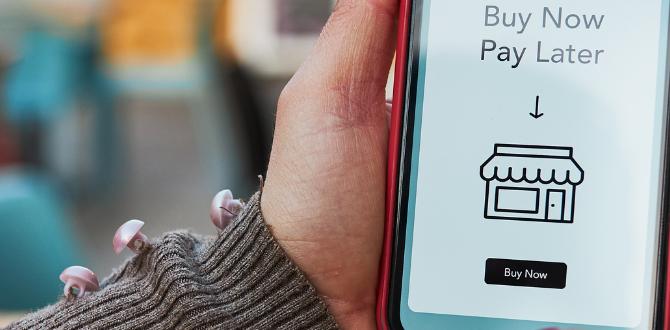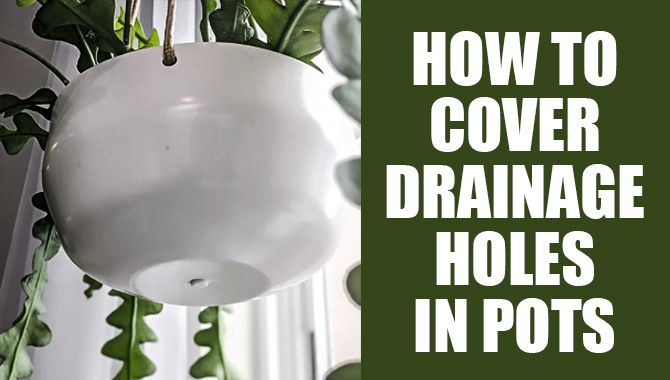Did you know your urine can tell you a lot about your health? The color of your urine is not just about your hydration. It can speak volumes about what’s happening inside your body.
Imagine you wake up and head to the bathroom. You glance down and notice a bright yellow color. Does that mean you are healthy? Or maybe it’s a hint that you need to drink more water? These questions matter! They can help you understand your body’s needs.
Interestingly, the average person might not think much of their urine color. But here’s a fun fact: doctors often study urine during check-ups. Why? Because it can reveal important health clues! Understanding what the color of your urine says about your health can help you make better choices every day.
As we dive deeper, we’ll explore what different colors mean. Are you curious about what your pee is trying to tell you? Let’s find out together!
What The Color Of Your Urine Says About Your Health And Wellness

What the Color of Your Urine Says About Your Health
The color of your urine can tell you important things about your health. For instance, clear urine means you’re well-hydrated, while dark yellow suggests dehydration. What if you notice a red tint? That could indicate a health concern needing attention. Light-to-medium yellow is typically healthy. Did you know certain foods and medications can also change urine color? Paying attention to these shades can help you stay healthy and catch issues early.Understanding Urine Color
Explanation of urine composition. Importance of color as a health indicator.Urine is mainly made up of water, salts, and waste products. Its color can clue us in on our health, acting like a tiny detective. A light yellow usually means you’re well-hydrated, while darker shades might scream, “Hey, drink more water!” Other colors can indicate specific issues, such as bright red signaling a need for a check-up. Keep an eye on your pee—it might just be trying to tell you something!
| Urine Color | What It Might Mean |
|---|---|
| Clear | Over-hydrated |
| Pale Yellow | Well-hydrated |
| Dark Yellow | Dehydrated |
| Red | Possible bleeding or food coloring |
| Brown | Liver issues or severe dehydration |
Remember, your body has ways of communicating. Sometimes, it’s by showing off its rainbow of urine colors! So, check it out next time—it could save you a trip to the doctor.
Normal Urine Colors
Description of pale yellow to amber color spectrum. Factors influencing normal color variations.Urine can be many shades, usually from pale yellow to amber. This color shows how much water is in your body. Pale yellow means you are well-hydrated. Amber suggests you need to drink more water. Other factors like food and medications can change urine color too. Foods like beets or berries can make it darker. Medications might also create bright colors. Staying healthy means paying attention to these changes.
What can affect urine color?
Urine color varies for several reasons. Common factors include:
- Hydration: Water intake influences color.
- Diet: Certain foods change color.
- Medications: Some drugs alter urine color.
Light Yellow Urine: What It Means
Indications of hydration levels. Possible dietary influences on light yellow color.Light yellow urine often shows that you are well-hydrated. This color tells us that your body has enough water. Drinking plenty of fluids is important for keeping your urine this shade. However, food can also affect urine color. Foods like beets or carrots might change it a bit. Staying aware of your urine color can help you balance water intake and diet.
What does light yellow urine mean for my health?
Light yellow urine usually indicates good hydration. It shows your body is getting enough water, helping with many important functions. This means you are taking care of yourself!
Dark Yellow or Amber Urine
Signs of dehydration. Implications of certain foods or supplements.If your urine looks dark yellow or amber, it may be waving a little red flag. This color often signals dehydration. Your body needs water to function well, so it’s time to sip some H2O! On the bright side, certain foods like beets or carrots, and some vitamins can also change the color. So, if you’ve had a rainbow of veggies lately, it could just be your dinner doing a little show-and-tell!
| Color | Possible Cause |
|---|---|
| Dark Yellow | Dehydration |
| Amber | Vitamins or foods |
Red or Pink Urine: Causes and Concerns
Potential health issues and medical conditions. Foods that can cause temporary color changes.Seeing red or pink urine can be a little alarming. Relax! Sometimes it’s just a trick your body plays on you. Beets and blackberries can turn your pee a lovely shade of pink, like a juicy fruit punch. But don’t ignore it; it could signal something serious too, like blood. If it’s regular, it’s time to consult a doctor. Just say, “Doc, my pee’s getting a little too festive!”
| Food | Color Change |
|---|---|
| Beets | Pink |
| Blackberries | Pink |
| Food Dyes | Red |
While quirky foods like these can cause a temporary change, it’s essential to keep an eye on things. If the color sticks around longer than your friend’s bad jokes, it might be time to seek help! Remember, seeing red isn’t always the sign of a romantic dinner—it could mean something more serious is brewing.
Cloudy Urine: What It Reveals
Possible infections or health concerns. Other contributing factors.Cloudy urine can mean that your body is trying to tell you something. It might be a sign of an infection. Yes, the body can be dramatic sometimes! Conditions like a urinary tract infection (UTI) can cause this. Other factors can contribute too. Drinking too little water or eating certain foods can muddy the waters. So, if your urine looks like a cloudy day, it’s smart to check in with a doctor.
| Possible Causes | What It Means |
|---|---|
| Urinary Tract Infection (UTI) | Infection in the urinary system. |
| Dehydration | Not enough water intake. |
| Certain Foods | Foods like asparagus or beets. |
| Kidney Stones | Hard mineral deposits. |
If you notice a change, it might be time to pour yourself a glass of water—or two!
Brown Urine: Potential Health Risks
Causes related to liver function and dehydration. Importance of medical consultation.Seeing brown urine? Don’t panic, but it’s time to pay attention! It can mean your liver is on the fritz or you’re not drinking enough water. Your liver helps filter toxins, so if it’s not working well, that brown color could be a warning sign. Dehydration can also lead to darker urine, like a desert for your bladder! Always play it safe—consult a doctor if brown urine sticks around. They know more than you might think!
| Cause | What It Means |
|---|---|
| Liver issues | Possible damage or dysfunction |
| Dehydration | Not enough water intake |
Blue or Green Urine: Rare Causes
Possible medications and medical conditions. When to seek medical advice.Seeing blue or green urine? Don’t panic! It might be due to certain medications or unusual medical conditions. Some meds, like those for treating urinary tract issues, can cause this colorful display. Rarely, conditions like familial benign hypercalcemia or a liver problem might be the culprits too. If your urine looks like a neon sign for more than a day, it’s wise to call a doctor. Better safe than sorry!
| Cause | Description |
|---|---|
| Medications | Some treatments can change urine color. |
| Conditions | Rare diseases may cause unusual hues. |
Always listen to your body. Color changes can be your body’s way of talking. How about a fun fact? Did you know that some foods can also tint your pee? Yup, asparagus does that! Keep an eye on your hydration, too. Clear is usually the way to go.
Urine Color Changes and Hydration
Connection between hydration levels and urine color. Recommendations for maintaining optimal hydration.Urine color can tell us how well we are hydrated. Clear or light yellow urine usually means we drink enough water. Dark yellow or amber urine signals dehydration. To stay hydrated, it’s good to drink fluids regularly, especially water. Here are some tips:
- Drink at least 8 glasses of water daily.
- Choose water over sugary drinks.
- Eat foods with water, like fruits and veggies.
These habits help keep your body happy and healthy!
Why is water intake important?
Water helps our bodies work properly and keeps our urine light. Staying hydrated also helps with energy, mood, and overall health.
When to Seek Medical Attention
Signs that warrant a doctor’s visit. Importance of professional evaluation and diagnosis.It’s important to know when to see a doctor about your urine color. If you notice any of these signs, don’t wait:
- Dark yellow or amber color
- Blood in urine
- Strong odor
- Cloudiness
- Pain or burning while urinating
These signs can mean something serious. A medical professional can help. They can give a proper evaluation and diagnosis. Seeing a doctor can keep you healthy and safe.
What should I do if my urine is dark?
If your urine is dark, it could mean you are dehydrated. Drink more water and monitor your urine color. If it stays dark, visit a doctor.
Conclusion
In conclusion, the color of your urine can tell you a lot about your health. Clear or pale yellow means you’re hydrated, while dark yellow signals dehydration. If your urine is red or brown, you should see a doctor. Stay aware of these changes to maintain good health. For more tips on hydration and urine health, check out reliable health websites!FAQs
Sure! Here Are Five Related Questions On The Topic Of What The Color Of Your Urine Says About Your Health:The color of your urine can tell you a lot about your health. If it’s light yellow, you’re probably well-hydrated. Dark yellow or amber means you need to drink more water. If your urine is red or brown, it could mean something is wrong, so you should tell an adult. Always pay attention to these colors to stay healthy!
Sure! Just let me know the question you have in mind, and I’ll be happy to help with an answer.
What Might It Indicate If My Urine Is A Dark Yellow Color?If your urine is a dark yellow color, it could mean you need to drink more water. When we don’t drink enough, our bodies make urine darker. It can also mean you’ve been active or it’s hot outside. Always try to stay hydrated by drinking enough fluids each day!
How Does Hydration Level Affect The Color Of Urine?When you drink enough water, your urine is usually light yellow or clear. This means you are well-hydrated. If you don’t drink enough water, your urine can become darker yellow or amber. This tells you that your body needs more water. So, keep drinking to help your body stay healthy!
What Are Some Potential Health Issues Linked To Consistently Cloudy Or Foamy Urine?If your urine is often cloudy or foamy, it might mean there are health issues. It can indicate that you have proteins in your urine, which can be a sign of kidney problems. Dehydration can also make urine cloudy, so drinking more water is essential. Sometimes, it can show an infection in your bladder or urinary tract. If you notice this often, it’s a good idea to tell a grown-up and see a doctor.
Can Certain Foods Or Medications Change The Color Of Urine, And If So, Which Ones?Yes, some foods and medicines can change the color of urine. For example, eating beets can make it pink. Asparagus can make urine smell funny. Certain medicines, like some vitamins, can turn it bright yellow. It’s usually nothing to worry about, but it’s always good to check with a parent or doctor if you’re unsure.
When Should I Seek Medical Advice Based On The Color Or Appearance Of My Urine?You should see a doctor if your urine is very dark, red, or has a strong smell. This can mean something could be wrong. If you notice bubbles or foam that doesn’t go away, that’s also a good reason to ask a doctor. It’s always smart to check if you feel worried about your urine.








